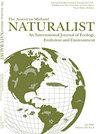揭示Sedge多样性的重要中心:美国阿拉巴马州杰克逊县的莎草科植物。
IF 0.6
4区 环境科学与生态学
Q4 Agricultural and Biological Sciences
引用次数: 1
摘要
摘要杰克逊县是美国阿拉巴马州最东北的一个县,完全位于阿巴拉契亚高原的南部。本文基于多年的野外调查、植物标本馆工作和在线(数字化)标本的回顾,介绍了杰克逊县Carex的多样性、栖息地、生物地理和保护状况。我们用保存在多个植物标本室的标本记录了杰克逊县90个苔属植物类群。这一数值超过了在阿巴拉契亚高原南部其他类似大小地区已知的分类群数量。白色念珠菌变种埃蒙西是一种新的州记录,在阿拉巴马州只有杰克逊县才知道。我们在本研究之前收集的标本中遇到了大量的错误鉴定,并排除了先前在杰克逊县报道的基于错误鉴定的9个分类群。在杰克逊县,苔属植物生长在大量的生境中,其中两个类群的数量最多:成熟的、湿润的、落叶的、粘土和粘土壤土上的洪泛平原森林;成熟的,中质的,富含钙的,落叶的,陆地上的壤土林。杰克逊县是东南部特有物种和发生在其南部边界或附近的分类群的联系。13种苔属植物在阿拉巴马州很罕见,可能是该州的保护重点。该研究为了解莎草多样性、生态学、地理学和保护提供了基础知识,对揭示北美重要的苔草多样性中心具有重要意义。本文章由计算机程序翻译,如有差异,请以英文原文为准。
Revealing a Significant Center of Sedge Diversity: Carex (Cyperaceae) of Jackson County, Alabama, U.S.A.
Abstract. Jackson County is the northeasternmost county of Alabama, U.S.A., and falls entirely in the southern portion of the Appalachian Plateaus physiographic province. Based on multiple years of fieldwork, herbarium work, and review of online (digitized) specimens, this study presents the diversity, habitats, biogeography, and conservation status of Carex in Jackson County. We document 90 Carex taxa from Jackson County by voucher specimens deposited in multiple herbaria. This value exceeds the number of taxa known from other, similar-sized regions in the southern part of the Appalachian Plateaus. Carex albicans var. emmonsii is a new state record and is known in Alabama only from Jackson County. We encountered high numbers of misidentifications among specimens collected prior to this study and exclude nine taxa previously reported from Jackson County that are based on misidentifications. Carex plants grow in a great number of habitats in Jackson County, with two hosting the greatest number of taxa: mature, wet-mesic, deciduous, floodplain forests on clays and clay loams; and mature, mesic, calcium-rich, deciduous, upland forests on loams. Jackson County is a nexus for both southeastern endemics and taxa occurring at or near their southern limits. Thirteen of the Carex taxa are rare in Alabama and likely of conservation concern in the state. This study contributes fundamental knowledge that makes sedge diversity, ecology, geography, and conservation better known, and is especially important for revealing a significant center of Carex diversity in North America.
求助全文
通过发布文献求助,成功后即可免费获取论文全文。
去求助
来源期刊

American Midland Naturalist
环境科学-生态学
CiteScore
1.20
自引率
0.00%
发文量
38
审稿时长
18-36 weeks
期刊介绍:
The American Midland Naturalist has been published for 90 years by the University of Notre Dame. The connotations of Midland and Naturalist have broadened and its geographic coverage now includes North America with occasional articles from other continents. The old image of naturalist has changed and the journal publishes what Charles Elton aptly termed "scientific natural history" including field and experimental biology. Its significance and breadth of coverage are evident in that the American Midland Naturalist is among the most frequently cited journals in publications on ecology, mammalogy, herpetology, ornithology, ichthyology, parasitology, aquatic and invertebrate biology and other biological disciplines.
 求助内容:
求助内容: 应助结果提醒方式:
应助结果提醒方式:


